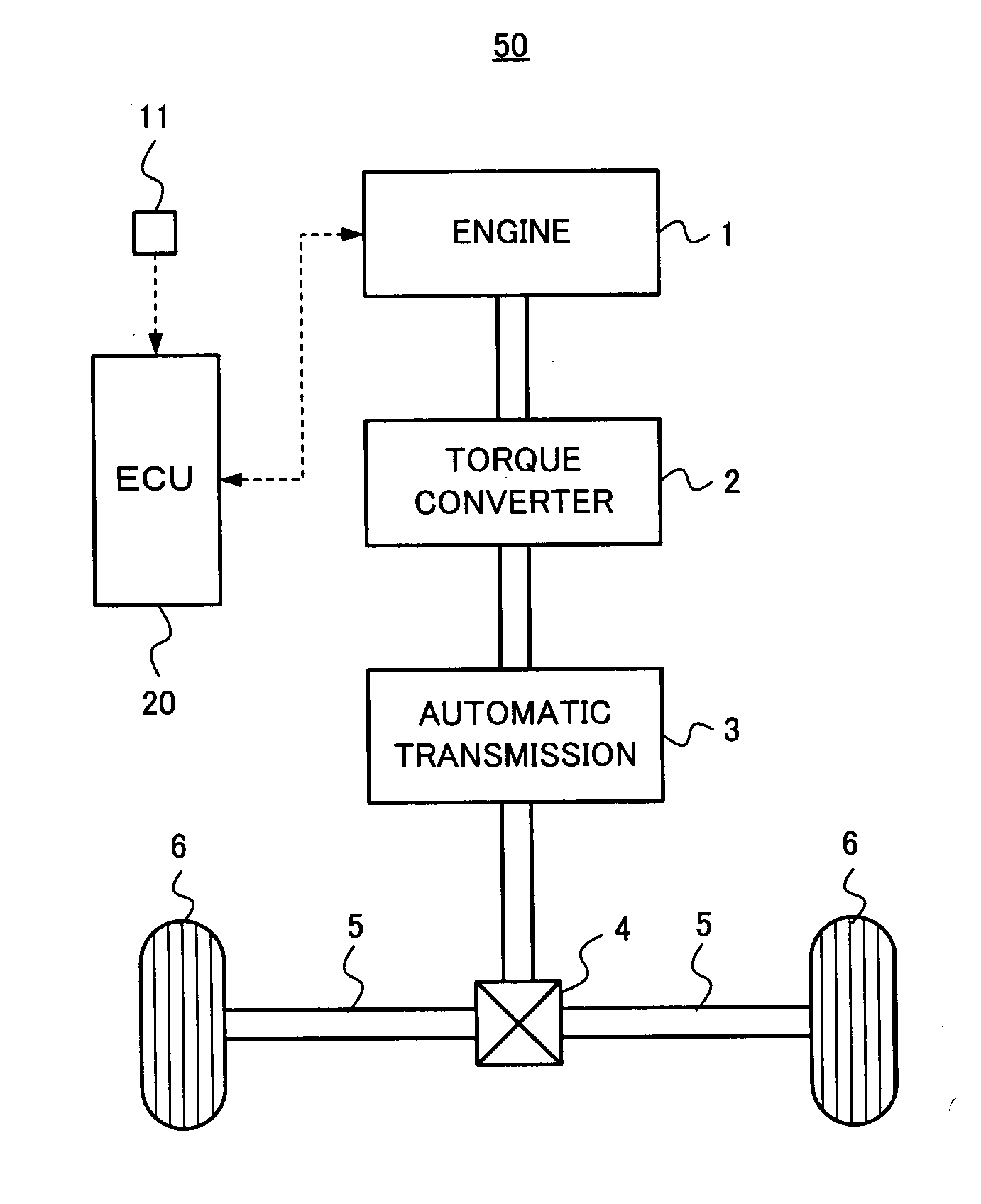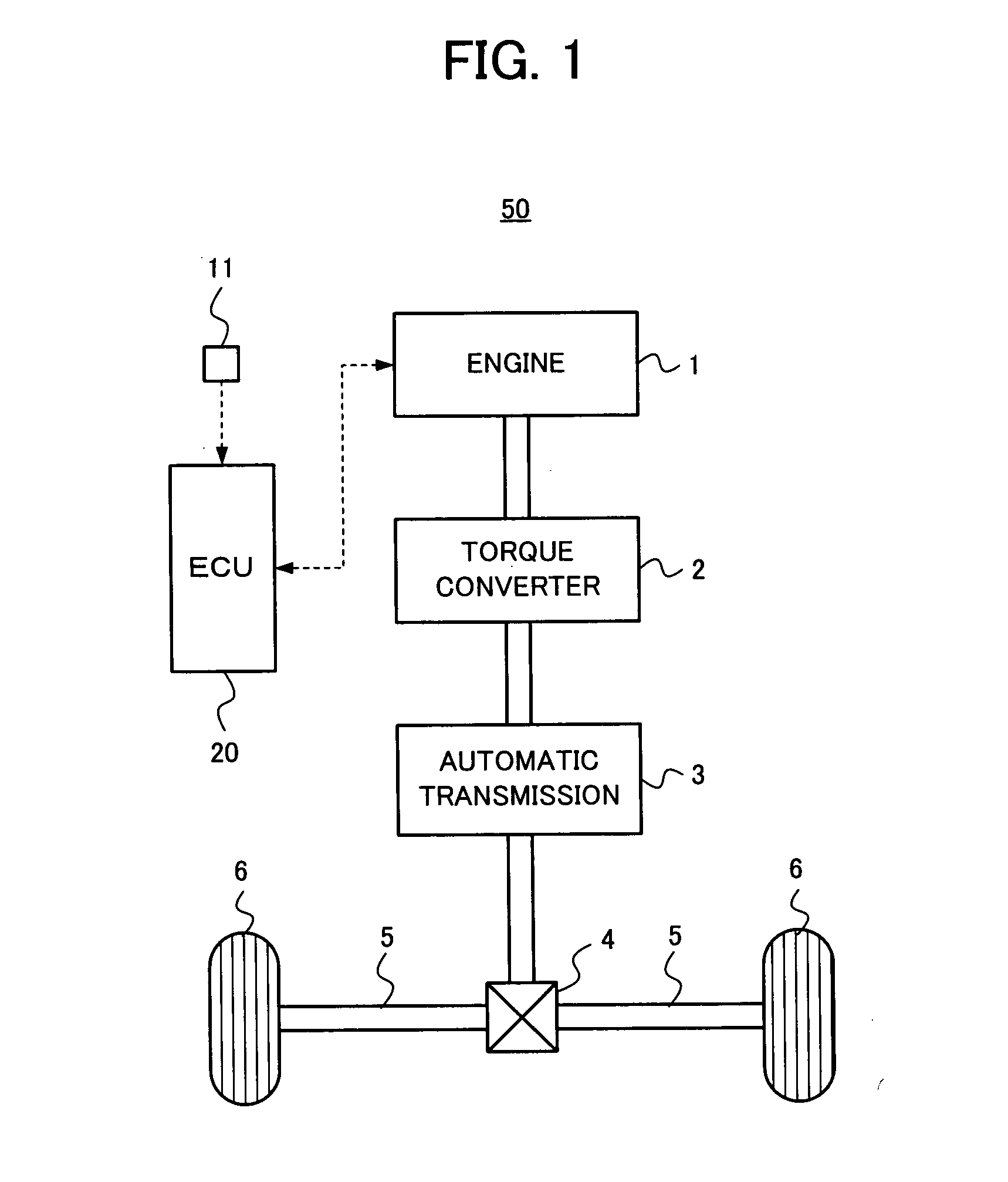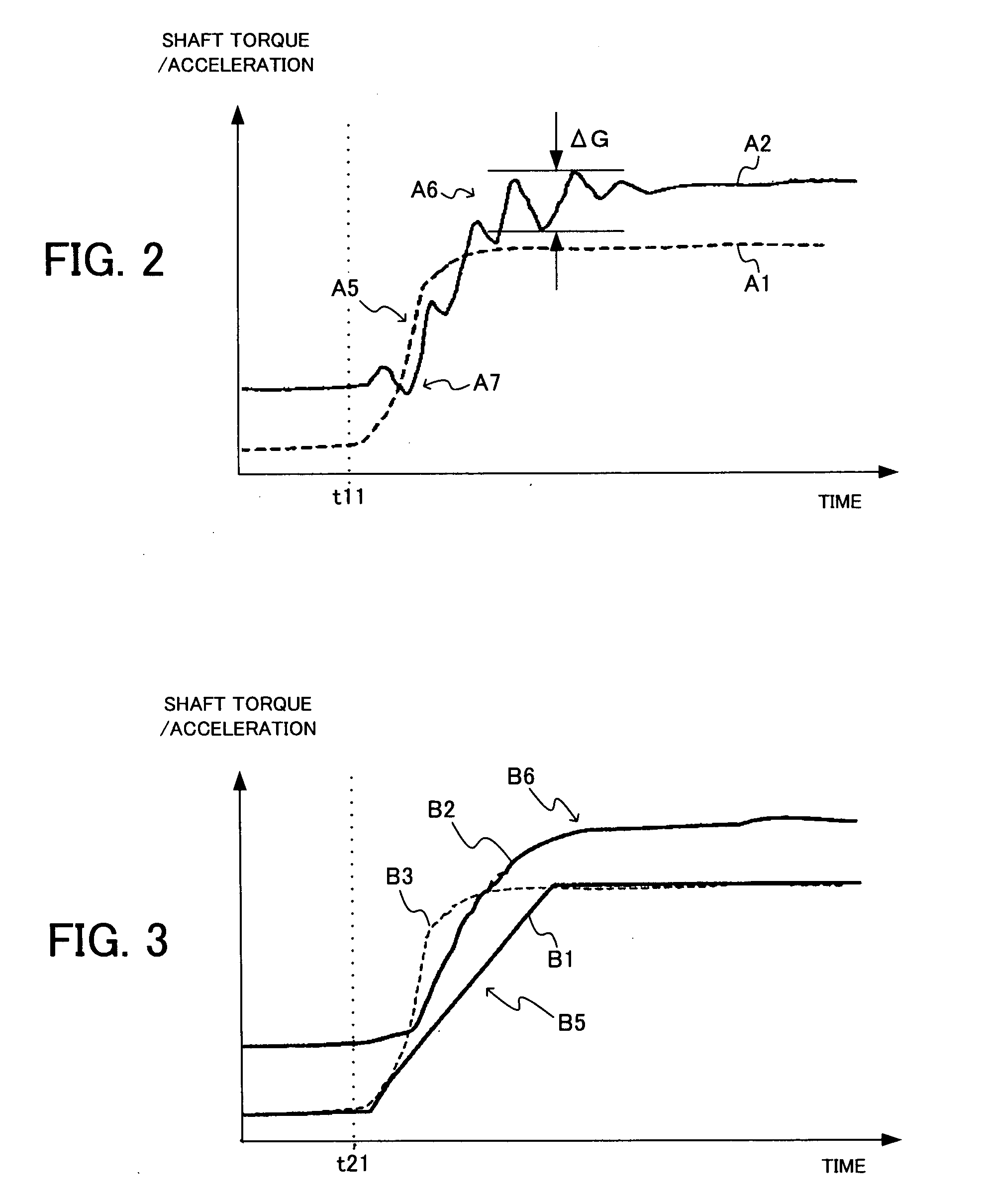Torque control device for internal combustion engine
a technology of torque control and internal combustion engine, which is applied in the direction of electric control, machines/engines, instruments, etc., can solve the problems of ineffective time (i.e., the time at which the acceleration does not appropriately rise up in correspondence with the acceleration instruction) and does not increase, so as to prevent response deterioration and fuel consumption deterioration, appropriately suppressing acceleration shock occurren
- Summary
- Abstract
- Description
- Claims
- Application Information
AI Technical Summary
Benefits of technology
Problems solved by technology
Method used
Image
Examples
first embodiment
[0049]In a first embodiment, the ECU 20 obtains the shaft torque from the requested torque at the time of acceleration. Then, when the shaft torque gradient becomes larger than the predetermined value (i.e., the maximum allowable shaft torque gradient), the ECU 20 executes the torque control of the engine 1 so that the shaft torque gradient is limited to the maximum allowable shaft torque gradient. Concretely, the ECU 20 calculates the requested torque based on the acceleration instruction of the driver, which is obtained by the accelerator opening degree sensor 11, and obtains the shaft torque in consideration of the requested torque, the gear stage of the automatic transmission 3 and the gear ratio of the differential gear 4. Then, the ECU 20 obtains the shaft torque gradient from the shaft torque, which corresponds to observing the shaft torque and obtaining the shaft torque gradient. When the shaft torque gradient becomes larger than the maximum allowable shaft torque gradient, ...
second embodiment
[0058]Next, a description will be given of a second embodiment of the present invention. In the second embodiment, the torque control of the engine 1 is executed so that the shaft torque gradient is maintained equal to or smaller than the maximum allowable shaft torque gradient during the acceleration, similarly to the above-mentioned first embodiment. However, the second embodiment is different from the first embodiment in that the maximum allowable shaft torque gradient is changed in correspondence with the request of the driver. Concretely, in the second embodiment, the ECU 20 uses the drive mode which the driver sets in order to adjust the drivability, as the request of the driver, and changes the maximum allowable shaft torque gradient in correspondence with the drive mode. That is, the ECU 20 changes the aimed shock amount in correspondence with the set drive mode.
[0059]A description will be given of an example of a method of changing the maximum allowable shaft torque gradien...
third embodiment
[0066]Next, a description will be given of a third embodiment of the present invention. In the third embodiment, the torque control of the engine 1 is also executed so that the shaft torque gradient is maintained equal to or smaller than the maximum allowable shaft torque gradient during the acceleration, similarly to the above first and second embodiments. Also, the maximum allowable shaft torque gradient is changed in correspondence with the request of the driver, similarly to the second embodiment. However, the third embodiment is different from the second embodiment in that the ECU 20 uses, as the request of the driver, the accelerator opening speed (i.e., accelerator stamping speed) and the maximum allowable shaft torque gradient is changed in correspondence with the accelerator opening speed. Namely, the ECU 20 changes the aimed shock amount in correspondence with the accelerator opening speed.
[0067]A description will be given of an example of a method of changing the maximum ...
PUM
 Login to View More
Login to View More Abstract
Description
Claims
Application Information
 Login to View More
Login to View More - R&D
- Intellectual Property
- Life Sciences
- Materials
- Tech Scout
- Unparalleled Data Quality
- Higher Quality Content
- 60% Fewer Hallucinations
Browse by: Latest US Patents, China's latest patents, Technical Efficacy Thesaurus, Application Domain, Technology Topic, Popular Technical Reports.
© 2025 PatSnap. All rights reserved.Legal|Privacy policy|Modern Slavery Act Transparency Statement|Sitemap|About US| Contact US: help@patsnap.com



